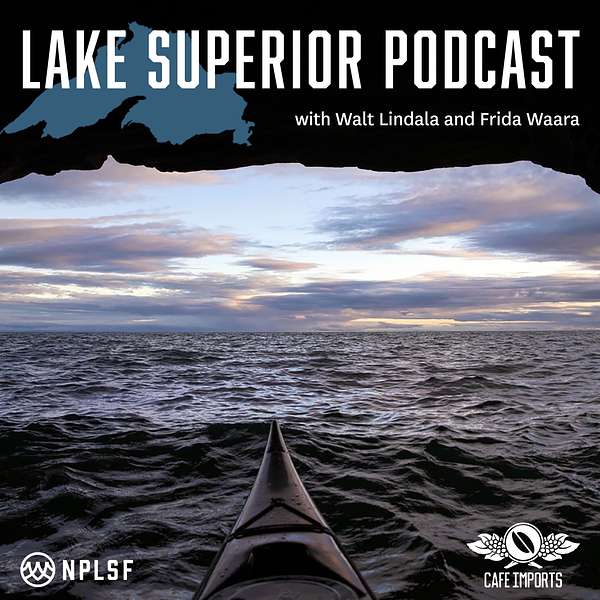
Lake Superior Podcast
We are made stronger by story and there’s no better source than the continent's largest body of freshwater, Lake Superior. Join hosts Walt Lindala and Frida Waara as they highlight the five National Parks that ring this Greatest of the Great Lakes - meeting the people, touring the places and learning about the projects that make these parks and body of water so remarkable.
Join our podcast community! Please share your own stories, comments and podcast episode suggestions (www.nplsf.org/community).
Brought to you by The National Parks of Lake Superior Foundation (www.nplsf.org).
Theme song: King Whirl by David Huckfelt (www.davidhuckfelt.com).
Photo Credit: David Guttenfelder.
Podcast sponsored by Café Imports, a Minneapolis-based importers of fine, specialty green coffees.
Lake Superior Podcast
S6 E6: Fort Wilkins, Copper Harbor, and Living History in the Keweenaw – An Interview with Barry James
Long before the Keweenaw Peninsula became a destination for hikers, bikers, and Lake Superior rock hounds, it was the stage for a national copper rush. Shortly after Michigan became a state in 1837, Geologist Douglas Houghton was sent to Copper Harbor to explore reports from Native Americans about copper in the region. By 1844, Fort Wilkins was built to be the military base helping to keep the peace as fortune-seekers came to the state’s most northern port.
In this episode of the Lake Superior Podcast, Walt Lindala and Frida Waara talk with Barry James, Upper Peninsula historian with the Michigan History Center, about the fascinating past—and present—of this historic state park. From the 1840s copper rush chaos to Civil War reenactments, as well as lighthouse tours and tales of shipwrecks, Fort Wilkins remains a living classroom with extensive youth programs. Join us as we explore the enduring significance of this frontier fort—and the people working to keep its stories alive.
Key Takeaways:
- Fort Wilkins was built in the mid-19th century in Copper Harbor to maintain law and order during the copper rush.
- The fort served as a frontier military post, supporting mining operations and maritime navigation in one of the most remote regions of Michigan’s Upper Peninsula.
- The Copper Harbor Lighthouse and range lights were established in response to early shipwrecks, including the 1844 wreck of the John Jacob Astor, which supplied Fort Wilkins.
- Today, Fort Wilkins Historic State Park is part of the Keweenaw National Historical Park’s heritage site network and offers youth camps, Civil War reenactments, and public education programs.
- Barry James and the Michigan History Center are working to expand exhibits, including a new display on how Fort Wilkins became a state park in 1923.
Notable Quotes:
- “What it really represents is an excellent example of a mid-19th century military post as the United States was expanding westward.”
- “The Astor was the first wreck on Lake Superior in 1844. The military realized that their lifeline could be easily snapped.”
- “We also offer a living history program that's been ongoing since 1976, where we have costumed interpreters within the fort that represent the last occupation at Fort Wilkins, the summer of 1870.”
- “We’ve got 19 buildings on site, but 12 are original, dating back to the 1840s. So people can go into these buildings, look at the exhibits. We have period rooms with furniture and interpretation of the period.”
- “To get on the National Register of Historic Places, you really have to have something significant with the historic site, so that says enough right there.”
Resources:
- Fort Wilkins Historic State Park: https://www.michigan.gov/mhc/museums/fwchl
- Michigan History Center: https://www.michigan.gov/mhc
- Keweenaw National Historical Park: https://www.nps.gov/kewe
Connect With Us:
- Website: https://nplsf.org/podcast
- Facebook: https://www.facebook.com/NationalParksOfLakeSuperiorFoundation
- LinkedIn: https://linkedin.com/company/national-parks-of-lake-superior-foundation
Sponsors:
- Cafe Imports: Supporting environmental sustainability in coffee-growing regions since 1993. Learn more at https://cafeimports.com
- National Parks of Lake Superior Foundation: Support vital projects by donating at https://nplsf.org/donate